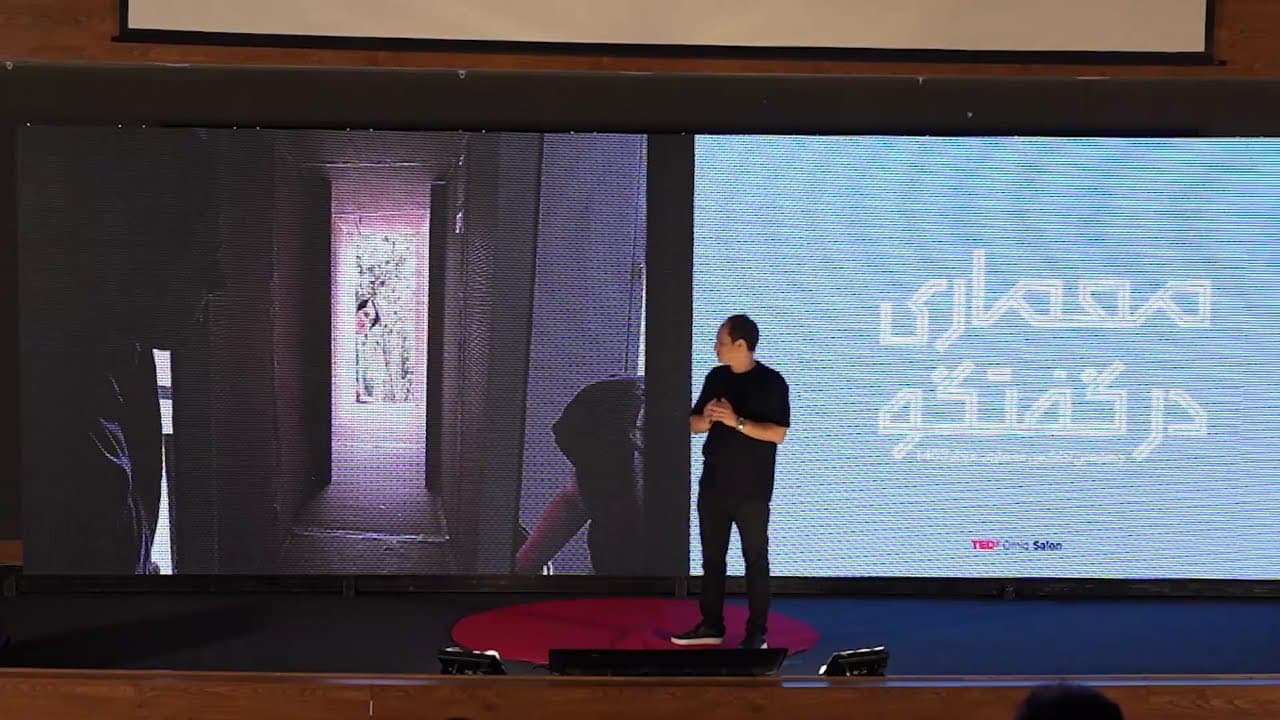An architectural guide to imagination | Yaser Mousapour | TEDxOmidSalon
03 Sep 2024 (over 1 year ago)

The Power of Imagination in Architecture
- The audience is asked to imagine a street running through the space behind the speaker, with people walking and talking. (17s)
- Some of the pedestrians, intrigued by the architectural concept of imagination, stop to listen to the speaker. (46s)
- Mousapour believes that imagination is a valuable human asset that has enabled progress throughout history by allowing people to envision and strive for alternative realities. (3m26s)
- Mousapour argues that architecture, despite its seemingly small scale, has the capacity to offer fresh perspectives and imagine alternative realities by looking beyond the obvious and challenging existing norms. (4m22s)
- Yaser Mousapour believes the difference between a building and architecture is that a building accepts realities while architecture rejects realities to imagine other realities. (7m7s)
Blurring Boundaries: Inside and Out
- A restaurant named Hamhava was designed to feel like an extension of the sidewalk, blurring the lines between the inside and outside. (9m4s)
- The restaurant featured a mirror at the end of the space to create the illusion of another street continuing beyond. (9m23s)
Reimagining Windows and Workspaces
- A workspace was designed within a building that typically offered limited views and natural light, aiming to reimagine the traditional window to provide a better experience for its occupants. (10m0s)
- A project called Mega Window was created where windows, instead of being flat panes of glass, branch out in tunnels towards the center of the space. (11m43s)
- Within the stems of each tunnel, new windows are created, providing each person with their own dedicated window next to their workspace. (11m59s)
- The project aimed to test the idea of a butterfly flying from an urban environment into the space, reaching the center, and then exiting, creating a collage of the outside within the inside. (11m26s)
Challenging Conventions: Carpets as Columns
- The speaker discusses a project where carpets were used to create columns in a minimalist and modern space, blurring the line between architectural elements and the content they display. (14m8s)
- A challenge faced was that the client could not see the progress of the project until the very end when the carpets were installed, as 99% of the process had to be completed before the carpets could be added. (14m46s)
- The speaker describes a moment of realization when the owner of the shop referred to the carpet structures as "carpet columns," the same term used by the speaker, highlighting the shared vision and the realization of the imagined reality. (15m41s)
Integrating Nature and Architecture
- In Ramsar, a project involved the construction of seven cabins in a linear forest near the Ramsar cable car. (17m15s)
- To avoid disrupting the forest and beachgoers' access, a diagonal bridge facing the beach was envisioned, with cabins placed on top using cranes. (18m20s)
Rethinking Apartment Living
- The project involved designing apartments that broke away from the repetitive nature of modern apartments. (19m32s)
- The design incorporated a walking path with various moments and experiences, integrating the apartment with the outdoors. (20m11s)
- The apartments featured spaces for activities like basketball and included outdoor rooms that allowed for air circulation and interaction with the external environment. (20m32s)
Inspiration from Unexpected Sources
- Yaser Mousapour won a competition for an architectural project that involved combining disparate and unrelated events into a cohesive design. (21m17s)
- Mousapour observed a table used by the builders to negotiate with colleagues, which included pathways, rooms, and private spaces within a forest setting, leading him to perceive it as a tangible manifestation of imagination. (21m24s)
- Mousapour believes in the importance of architecture and imagination, encouraging others to utilize architecture as a means to envision and create new realities for living. (22m10s)